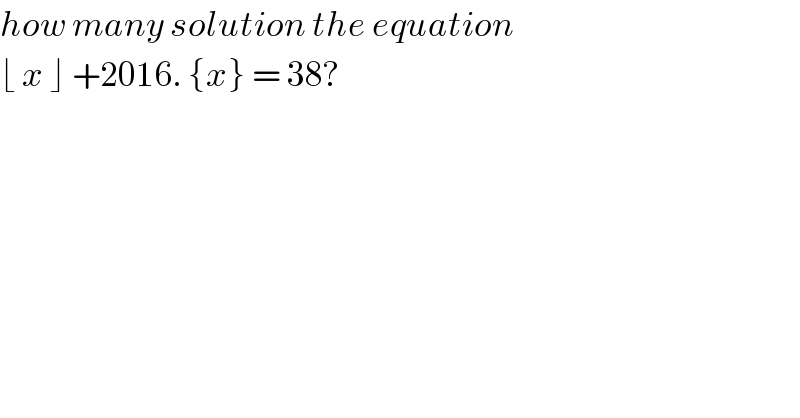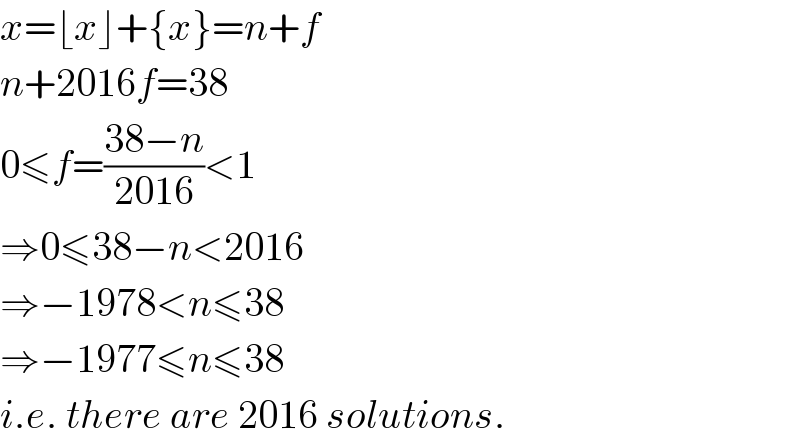
Question and Answers Forum
Question Number 90698 by jagoll last updated on 25/Apr/20

Commented by mr W last updated on 25/Apr/20

Commented by jagoll last updated on 25/Apr/20

Commented by mr W last updated on 25/Apr/20

Answered by mr W last updated on 25/Apr/20

Commented by jagoll last updated on 25/Apr/20

Commented by mr W last updated on 25/Apr/20
![for each n ∈[−1977, 38] there is a solution x=n+((38−n)/(2016)). we have totally 2016 values of n: −1977, −1976, ...,−1, 0, 1, ..., 38 therefore there are 2016 solutions for ⌊x⌋+2016{x}=38.](Q90719.png)
Commented by jagoll last updated on 25/Apr/20

Commented by mr W last updated on 25/Apr/20

Commented by jagoll last updated on 25/Apr/20

